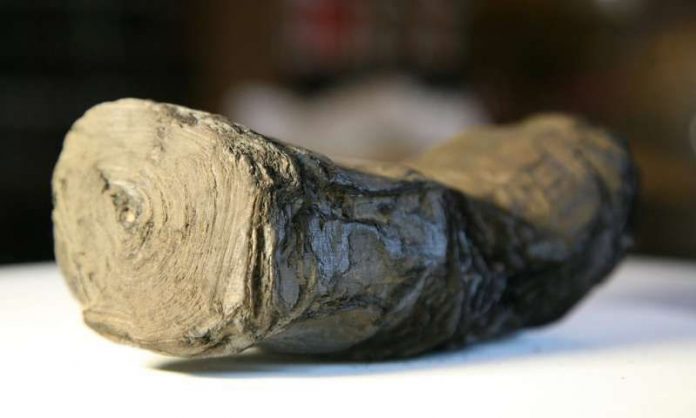Researchers at Britain’s national synchrotron have harnessed powerful light beams to virtually unwrap and decipher a fine library of scrolls that were carbonized by the searing heat of ash and gas following the burial of the towns of Pompeii and Herculaneum about 2000 years ago.
The city of Herculaneum was caught in the same volcanic eruption that destroyed Pompeii in 79 A.D. These particular scrolls come from a villa found in Herculaneum that is thought to have been owned by Julius Caesar’s (third and final) father-in-law, Lucius Calpurnius Piso Caesoninus.
The scrolls are charred almost beyond recognition. Scientists have tried to unravel a few of them, but some scrolls ended up destroyed in the process. Even when they survived this, exposure to air quickly caused the ink to fade.
Archaeologists found 1,800 scrolls in the villa, and half of those remain wrapped. If experts can come up with a way to read them without doing more damage, it could provide a wealth of information about the ancient Roman world. According to Reuters, this is the only intact library to ever have been found from this time period.
After years of trying and plenty of disappointment, a team of researchers led by University of Kentucky computer science chair professor Brent Seales believe that they have figured out a way to read the scrolls without harming them.
Seales and his team came up with a computer algorithm that they hope can read visible parts of the scrolls, and learn the difference between the dark ink writing and the dark charred paper. They are training this algorithm by showing it fragments of already broken scrolls.
Seales is also employing the use of a synchrotron, a particle accelerator that creates high-intensity X-rays and light “10 billion times brighter than the sun” in order to take images inside the scrolls, according to Smithsonian Magazine.
The computer will then use the X-rays to virtually unroll the scrolls and identify the remaining writing without damaging them.
This project will attempt to read two unopened scrolls, but if the team is successful it could open up the door to the rest of the collection. “The first thing we are hoping to do is perfect the technology so that we can simply repeat it on all 900 scrolls that remain,” Seales said, according to the Guardian.















